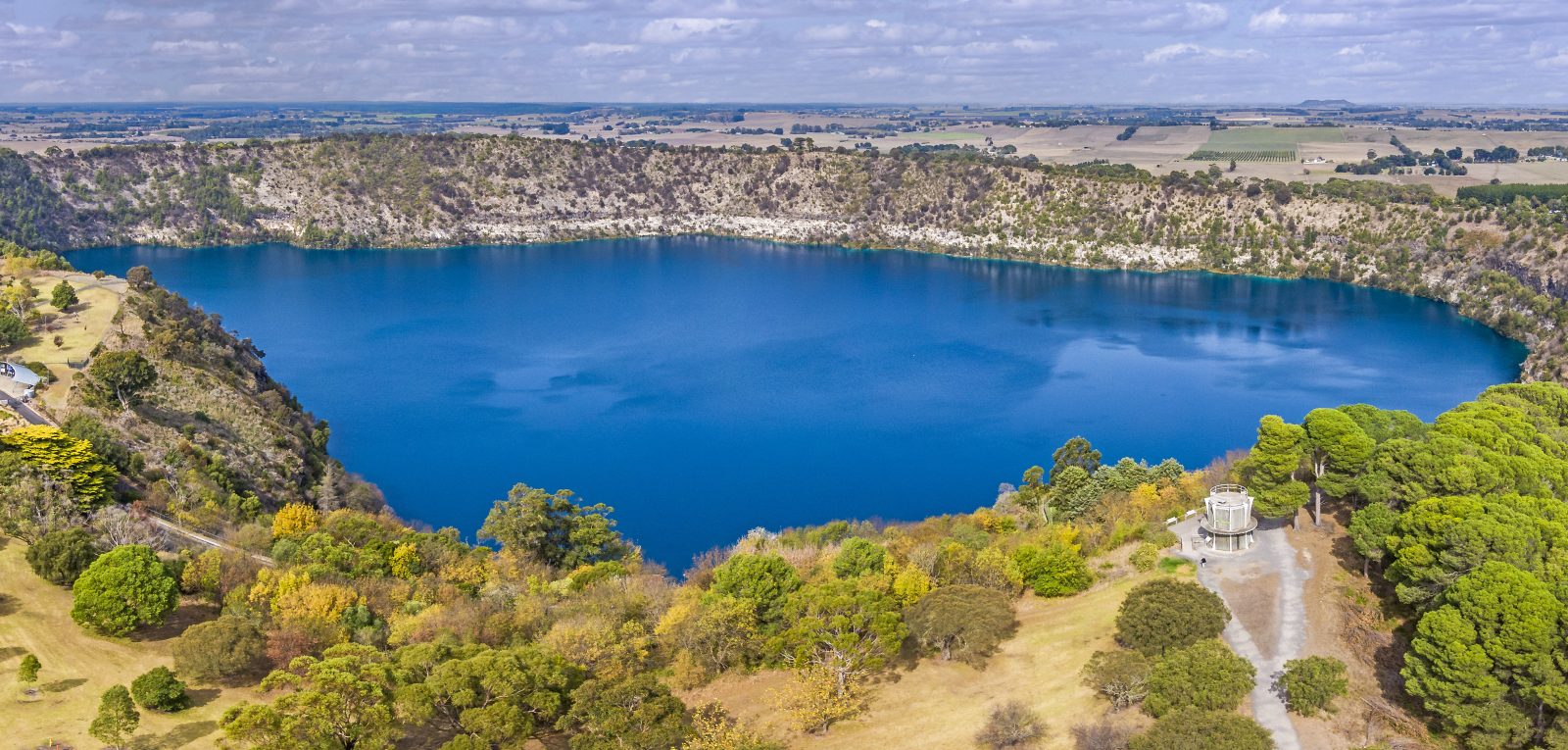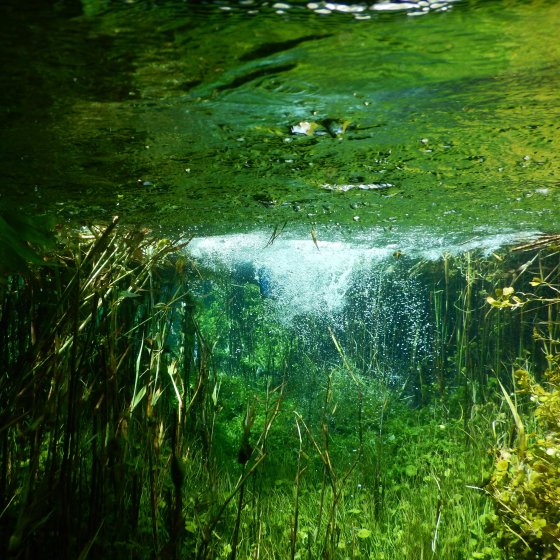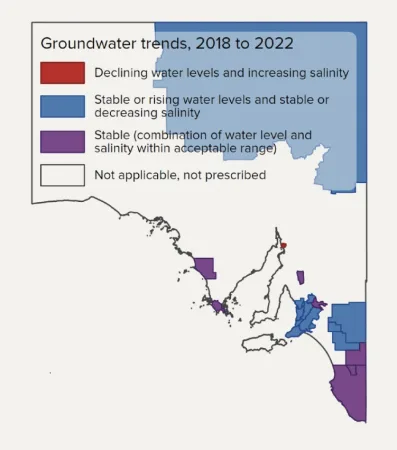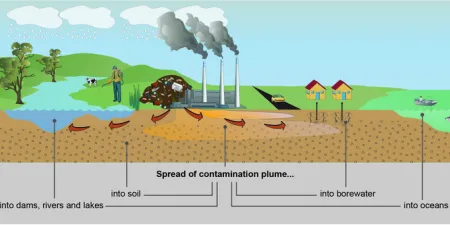- Home
- Environmental Themes
- Waters
- State of our Waters
- Groundwater
Groundwater
Groundwater is a valuable natural resource in South Australia. It represents the largest source of fresh water in the state and is critical to ecological health as it forms an integral part of the total water cycle feeding our streams, lakes, wetlands and oceans.
Groundwater supports the viability of the agricultural, pastoral, mining and tourism industries and sustains important cultural values for Aboriginal peoples. We rely on groundwater as a water supply particularly in regional areas where surface water is scarce. In some cases this has led to over-allocation of water resulting in groundwater depletion and/or degradation including rising salinity. As the demand for groundwater is projected to increase in the future, the careful protection of this valuable resource is critical.
The Great Artesian Basin (GAB) intersects with South Australia and is one of the largest freshwater resources in the world with a capacity of 64,900 million megalitres. It connects with the Murray–Darling Basin and the Lake Eyre Basin and provides a vital resource for pastoral, agricultural and extractive industries and supplies water to many towns. The GAB also sustains a range of groundwater dependant ecosystems.
The protection of the GAB is guided by the Great Artesian Basin Strategic Management Plan, developed collaboratively by the Australian, New South Wales, Northern Territory, Queensland and South Australian governments in 2020. The plan spans 15 years (ending 2034) and will be reviewed every 5 years. A project has been undertaken to assess existing and new geoscientific data and technologies to inform water management decision making for the Basin.
South Australia also has a number of permanent and semi-permanent springs that result from the seepage of groundwater to the surface. These springs support significant Aboriginal cultural values as well as attracting tourists to the region, most famously at the Dalhousie complex associated with the Great Artesian Basin.
Groundwater supports a wide variety of specifically adapted invertebrates known as ‘stygofauna’ and microbial communities that provide important ecosystem services such as water purification, bioremediation and water infiltration.

Groundwater Level and Salinity

The overall condition of groundwater resources in South Australia is good, with 5-year trends in water salinity generally stable. Groundwater levels were variable depending on the groundwater management area, with 11 of the 19 groundwater areas showing an overall stable or rising 5-year trend and other areas experiencing declining trends. This is likely to be due to lower aquifer recharge from a decrease in rainfall and/or increased extraction of groundwater.
Over the past 5 years, metered groundwater extractions were less than 28% of the volume allocated. In individual regions, metered use ranged from 5% to 53% of the 2021–22 allocation volume.
According to data from the Bureau of Meteorology’s (BoM) Australian Groundwater Insight, there appears to be a general declining trend in groundwater levels for the upper aquifer over the last 20 years within areas of groundwater abstraction associated with agriculture, viticulture and horticulture. Declining trends for the lower and middle aquifers were also observed over the last 5 years in locations north of Adelaide and in the upper South East, which represent areas of intensive market gardening and cropping, respectively.
This is a change from the trends noted for the 10- and 20-year periods, which identified more stability in water levels. It is unclear whether or not the trends observed in the upper aquifer include impacts associated with climate change. However, based on the 5-year trend for the middle and lower aquifers, it is likely that the very low rainfall in 2019 has influenced the trends observed.
Site Contamination
Like all water resources, groundwater is susceptible to pollution. Certain industries and land uses, as well as poor waste management practices, can result in pollutants seeping into the underlying groundwater and adversely impacting its quality.
Groundwater pollution can also have a significant effect on human health, ecosystems and socio-economic development. However, as groundwater is generally more difficult to access than ‘above ground’ environmental media, remediation is typically difficult, costly and time-consuming. Prevention, as well as the early identification and management of groundwater quality impacts, are critical to the long-term sustainability of this vital resource.
Groundwater pollution has resulted from industry whereby, historically, chemicals were disposed of on the ground or via drains. The EPA has established several groundwater prohibition areas (GPAs) that restrict the use of groundwater from bores located in these areas due to potential impacts to health. Since 2013, there have been 12 GPAs with all but one being declared from 2018. Further information is available on the EPA's site contamination webpage.
Assessment of impacts to groundwater quality is currently limited to groundwater salinity and localised industrial pollution (site contamination) in urban areas, given the costs and logistics of monitoring groundwater and its ‘out of sight, out of mind’ nature.
A clearer understanding of groundwater quality will be vital into the future with potential increasing demand for groundwater supplies and climate change potentially reducing groundwater recharge (due to lower rainfall). Constraints on groundwater use, due to existing or future water quality impacts, will be increasingly important in this uncertain future.
The EPA is developing a new series of guidelines for groundwater quality monitoring of regulated activities in South Australia, which will comprise the following publications:
- groundwater monitoring bore network design
- groundwater sampling
- establishing baseline groundwater quality
- establishing groundwater quality assessment criteria
- developing a groundwater monitoring and management plan
- groundwater quality assessment reporting.
Managed Aquifer Recharge
Managed aquifer recharge (MAR) stores water from stormwater or treated wastewater in aquifers for later use. This approach is being adopted by councils and SA Water, with over 40 schemes now operating (DEW). In some situations, groundwater resources in urban areas can be supplemented by stormwater harvesting, treatment and subsequent storage in aquifers for later use as an alternative to mains water, eg for irrigation of public spaces.


